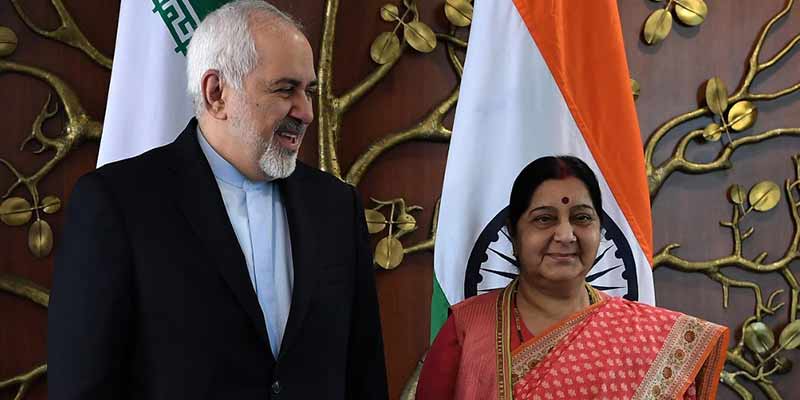- India
- May 15
India to decide on Iran oil after LS polls
India has informed Iran that a decision on oil imports will be taken only after the general election is over. Minister of External Affairs Sushma Swaraj held talks with her Iranian counterpart Javad Zarif in New Delhi on May 14 and conveyed to him that the decision will be taken based on commercial considerations, energy security and economic interests.
The talks between the two foreign ministers came 12 days after the US ended six-month-long exemptions from sanctions to India and seven other countries to buy oil from Iran. Zarif’s visit to India came amid an escalating face-off between Iran and the US over Tehran’s nuclear programme.
Sources said the visit took place at Zarif’s own initiative to brief India on the Iranian approach to recent developments in the region, including on Joint Comprehensive Plan of Action (JCPOA), and to review bilateral cooperation. In the meeting, Zarif mentioned that a 60-day deadline has been given to EU-3 and other parties to JCPOA for restoring Iran’s oil and banking channels.
When did the JCPOA come into effect?
On July 14, 2015, the P5+1 (China, France, Germany, Russia, the UK and the US), the EU and Iran reached a Joint Comprehensive Plan of Action (JCPOA) to ensure that Iran’s nuclear programme will be exclusively peaceful. It came into effect on October 18, 2015, and parties began taking steps necessary to implement their JCPOA commitments.
Under JCPOA, Iran agreed to reduce the number of its centrifuges by two-thirds and eliminate 98 per cent of its enriched uranium, going from a quantity enough to produce 10 nuclear weapons to a fraction of what was needed for a single nuclear weapon.
On May 8, 2018, US President Donald Trump announced that Washington would withdraw from the nuclear agreement, nearly three years after the JCPOA was signed. Trump said the JCPOA did not do enough to curb Iran’s ballistic missiles programme or address its support for armed groups in West Asia.
Why did India stop importing Iranian oil?
In 2018, the US told India and other countries to cut oil imports from the Gulf nation to zero by November 4 or face sanctions. However, Washington had granted a six-month waiver from sanctions to eight countries, including India. The waiver ended on May 2.
India - the second biggest buyer of Iranian oil after China - had agreed to restrict its purchase to 15 million tonnes a year, down from 22.6 million tonnes bought in 2017-18.
The sanctions have more than halved Iran’s oil exports to 1 million barrels per day (bpd) or less, from a peak of 2.8 million bpd last year. Exports could drop to as low as 500,000 bpd from May, an Iranian official said.
India stopped the purchase of Iranian oil in May when the US waiver ended.
Has the crisis affected Indo-Iran ties?
Indo-Iran ties have been on a upswing in the past few years. Prime Minister Narendra Modi visited Tehran in May 2016 with an aim to craft a strategic relationship with Iran and expand India’s ties with West Asia. During the visit, India and Iran signed nearly a dozen agreements, the centrepiece of which was a deal to develop the Chabahar port.
Later, India, Iran and Afghanistan signed a trilateral agreement providing for transport of goods among the three countries through the port.
In the meeting between Swaraj and Zarif, both sides expressed satisfaction at the operationalisation of the interim contract on the Chabahar port between India Ports Global Limited and Ports and Maritime Organisation.
Who is India’s biggest oil supplier?
India - the world’s third biggest oil consumer - meets more than 80 per cent of its needs through imports. Iraq has remained India’s top crude oil supplier for the second year in a row, meeting more than a fifth of its needs in 2018-19.
According to data from the Directorate General of Commercial Intelligence and Statistics, Iraq sold 46.61 million tonnes of crude oil to India in 2018-19, 2 per cent more than the 45.74 million tonnes it had supplied in 2017-18.
India provisionally imported 207.3 million tonnes of crude oil in 2018-19, down from 220.4 million tonnes in the previous fiscal. Saudi Arabia has traditionally been India’s top oil source, but it was for the first time dethroned by Iraq in 2017-18.

